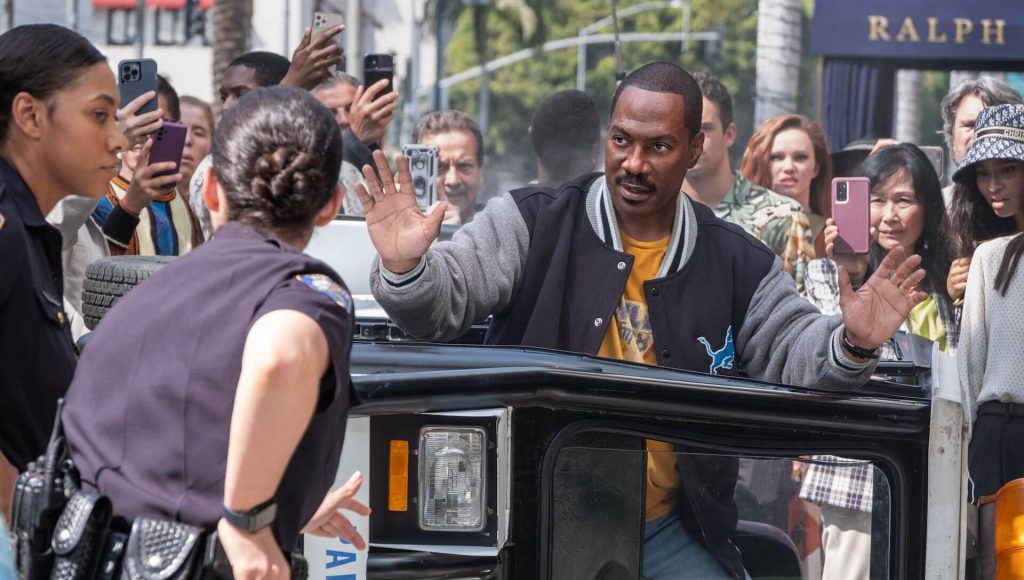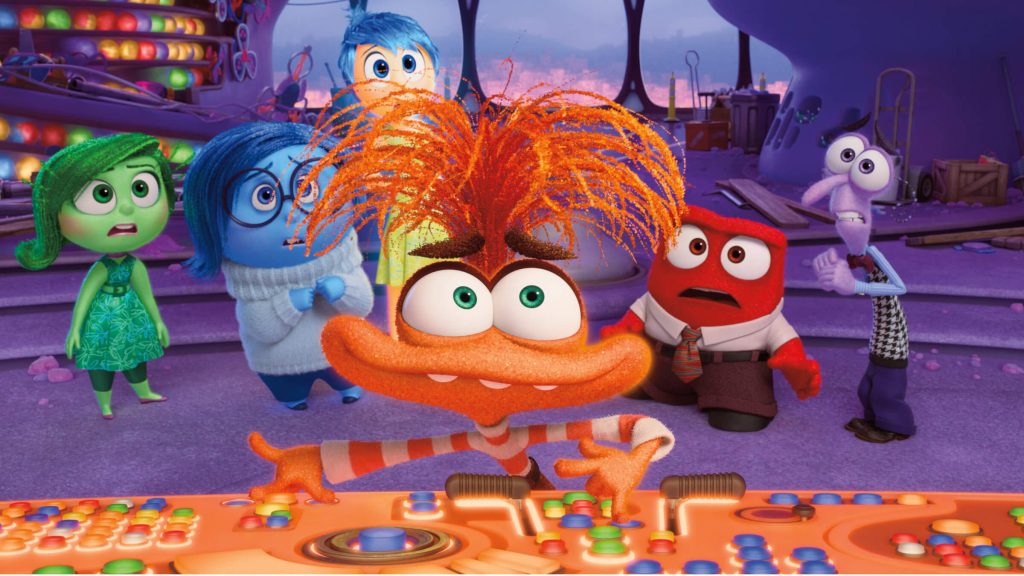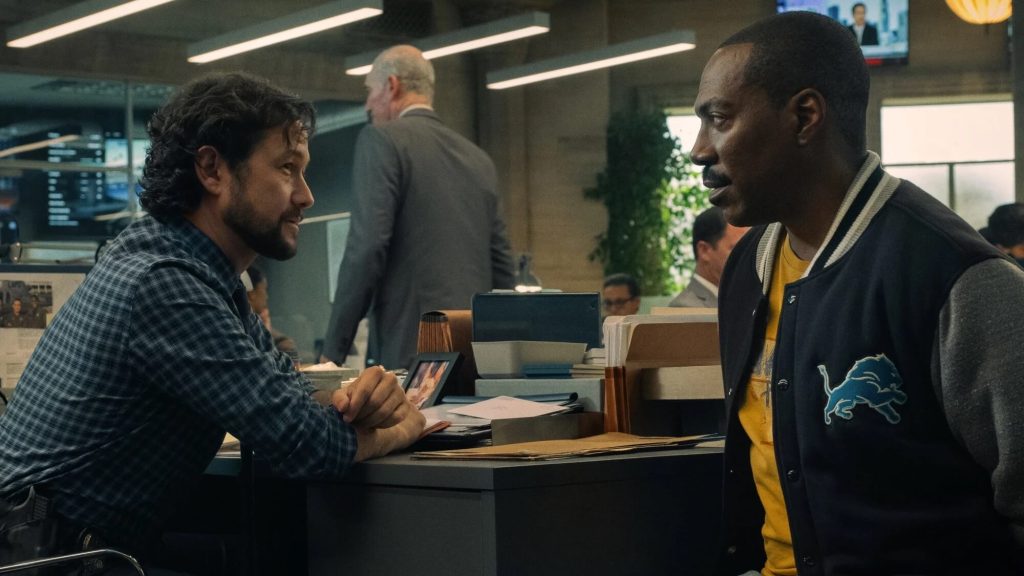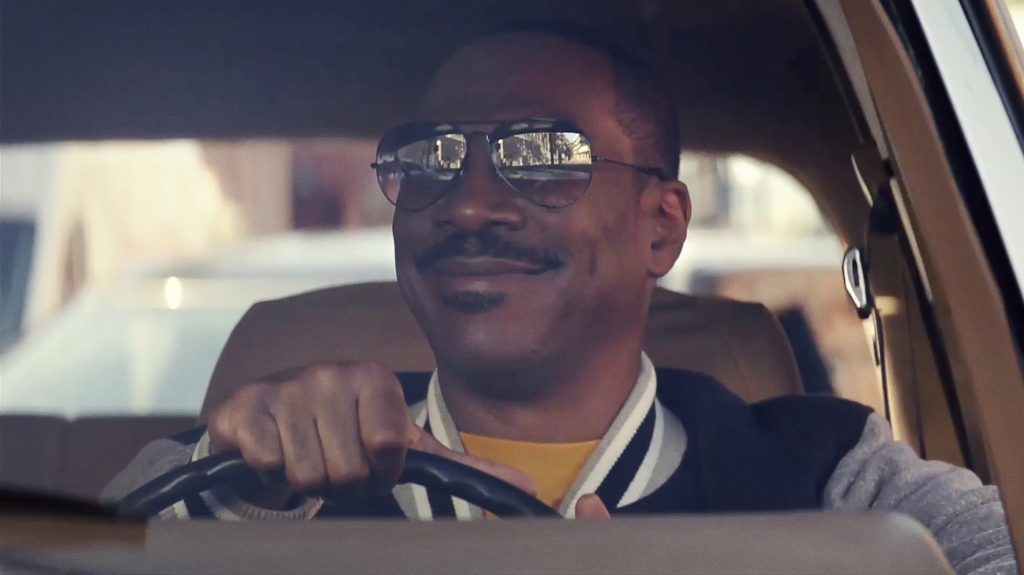Writing a successful sequel to a hit movie doesn’t have to be as difficult as most would think. Yet, so many subpar (or outright terrible) sequels come and go, leaving the audience questioning how the sequel got made, and wondering how the filmmakers and screenwriters could screw up a perfectly good formula.
With that in mind, let’s take a look at the Beverly Hills Cop franchise and see if the long-awaited fourth installment (30 years after the poorly-received third film was released) manages to earn the title of being a successful sequel.
What Makes a Successful Sequel?
Before we get into Axel Foley (Eddie Murphy) and his latest exploits, let’s offer a little context as far as what makes a sequel a good one or bad.
Where is this context coming from? Well, beyond being a professional screenwriter who has worked in the studio system in development as a script reader and story analyst—and one who even wrote a Rambo movie (they only kept my title, Rambo: Last Blood… I was not responsible for the rest)—I’m a movie buff who loves sequels. That’s right. Sequels. The bane of Hollywood, according to many cynics.
But remember that some of the greatest movies of all time were sequels:
- The Godfather: Part II
- The Empire Strikes Back
- Aliens
- The Dark Knight
- Toy Story 2
- Terminator 2: Judgment Day
- Star Trek II: The Wrath of Khan
- The Road Warrior
I love them… when they’re done right.
Years ago, I wrote a piece called “The Ten Commandments of Writing Great Sequels.” Here’s a recap of what I believe are the ten things that encompass a successful sequel. I’ll use these ten elements to ascertain whether or not Beverly Hills Cop: Axel F is a successful sequel.

1. The Original Warrants a Sequel
Let’s be honest. Sequels are all about money. When the studio or streamer knows that a movie has turned a hefty profit, they want to emulate that profit again and again. That is why sequels exist. But let’s go beyond that.
If you look at a film like Highlander, the story was done. The premise was that a group of sword-wielding immortals would wander the world for generations until they were drawn together to battle until only one remained. After that, the one would win the prize. End of story.
The original was a great film and a huge success. Sadly, they made sequel after sequel—the first of which was one of the worst sequels ever made, Highlander II: The Quickening.
In most cases, a movie warrants a sequel when either the story is left open-ended for more possible adventures or the cast of characters is charismatic enough for audiences to want to see more of them.
Read More: How to Generate Awesome (and Original) Feature Film Ideas
2. The Sequel Isn’t Just a Remake of the Original
Since a sequel is being made, it’s obvious this is happening because the original made an impact on the world. It’s very, very difficult to replicate the “lightning in a bottle” original. To simply regurgitate the same type of story in a sequel isn’t going to match the impact the original made.
Now, there are exceptions. Franchises like Rocky made hundreds of millions of dollars having Rocky face the next impossible-to-beat opponent after multiple training montages. But that leads us to our next point.
3. It’s New, But Also the Same
No, we don’t want a carbon copy of the original. But we also are returning to the original universe for a reason—we loved what we saw in the first installment.
The key to a successful movie sequel is finding that balance between something familiar and something new.
Aliens still had Ripley and a team of characters fighting a xenomorph, just as we had seen years prior in Alien. However, now the good guys were fighting against hundreds of xenomorphs (and one badass queen mother). And the good guys didn’t consist of unprepared blue-collar workers. No, this time they were a bunch of highly trained and well-equipped space marines.
It was new, but also had the same overall premise—Ripley against aliens. And audiences loved it.
4. Don’t Dismiss What the Characters in the Original Accomplished
If you want to anger and annoy the audience, just totally dismiss what their favorite characters accomplished by the end of the original.
In Ghostbusters 2, the beloved Ghostbusters were once again back at the bottom with no one believing in them. They saved New York City, for crying out loud!
In Star Wars: The Force Awakens, the end shot is of Rey (Daisy Ridley) delivering Luke’s lightsaber to Luke Skywalker (Mark Hamill). The last shot is of her handing it to him. In the film’s direct sequel, Star Wars: The Last Jedi, we move from that powerful moment to Luke throwing the lightsaber behind his back and walking away. Sure, it’s different and subverts expectations. But it also divided the audience.
No movie sequel should dismiss the accomplishments of the original (and sequels before it).
5. Take the Original Characters Forward
The original Star Wars trilogy was brilliant with this. Every film moved the characters forward in their lives and stories:
- Luke went closer and closer to becoming a Jedi
- Luke rose in the ranks of the Rebellion
- Han turned from a smuggler to a General
- Princess Leia (Carrie Fisher) became a seasoned fighter
- The relationship between Luke, Leia, and Han (Harrison Ford) evolved
The same can be said for the cast of characters in great sequels like Toy Story 2, Terminator 2: Judgment Day, The Godfather: Part II, The Road Warrior, Finding Dory, and, with its most recent success, Inside Out 2.
You always want to take the original characters forward in their lives. Audiences have grown to love the characters of movies that warranted sequels. They want to see their stories progress, as opposed to seeing them deal with the same thing over and over.

6. The Original Characters Are the Franchise
How many Fast and Furious movies have there been? What’s the central theme of those movies? Family. Throughout the whole franchise (beyond the first couple of missteps on that front), the franchise centered itself around the characters.
We also saw this with the original Star Wars movies, Jumanji, and John Wick.
It’s great to have new characters and new faces. But look at how divisive the Star Wars sequel trilogy ended up being for many. It was technically the Skywalker Saga. However, Luke Skywalker was barely in it. The core group of Han, Leia, and Luke were barely in those three films. They killed Han in the first one, Luke in the second, and, yes, Leia’s death was the result of actress Carrie Fisher’s untimely death during production.
The original characters are in the franchise.
7. Embrace the Mythos Created by the Original
Indiana Jones (Harrison Ford) had his hat and whip. John McClane (Burce Willis) in the Die Hard movies always said variations of his iconic “Yippee Ki Yay Motherf***er” line. Mad Max (Mel Gibbson and Tom Hardy) always had his car.
It’s so important to have these franchise mythos. Audiences love and expect them. When they don’t get them, they’ll turn on the sequel.
I was fortunate enough to pitch Rambo V to Millennium (the rights holder at the time), write the script (Rambo: Last Blood), and have the powers that be considered it. It was a dream come true. And you can bet that I had a reluctant warrior moment, a bow and arrow sequence, a knife, a cave, and many more subtle cues to the mythos of that franchise. That’s what makes a Rambo sequel feel like a Rambo film.
8. Don’t Reinvent the Wheel
Sequels shouldn’t be looked upon as opportunities to do something drastically different. Highlander II: The Quickening turned the concept into sci-fi schlock. Gremlins II: The New Batch turned the concept into a black comedy.
Again, give us something new, but familiar.
9. The Villain Has to Get Better and Better, Not Worse and Worse
The Rocky movies mastered this with the first four films. Whereas The Karate Kid movies didn’t.
While it’s hard to top a villain like Hans Gruber (Alan Rickman) in the original Die Hard (the sequel villains for that franchise never did), most of the great villains came from sequels.
- Khan
- The T-1000
- The Alien Queen (and her kids)
- Heath Ledger’s amazing Joker
- Boba Fett
- Wez and Lord Humungus (The Road Warrior)
Movie sequels need to up the ante and create better villains—or at least ones that somewhat match the original.
Read More: 200 Types of Villains, Antagonists, and Bad Guys
10. A Sequel Must Answer These Questions
Every great sequel needs to answer these four questions:
- What did they accomplish in the original or predecessor?
- What did they learn from that accomplishment?
- What conflict(s) can we throw at them to challenge the skills or knowledge that they learned?
- How will they deal with that challenge and conflict?

How Does Beverly Hills Cop: Axel F Match Up?
For context, I binged all four films in the span of two days so I could have a fresh perspective.
30 years after the disastrous third installment, we finally see Murphy return to the Axel Foley role. While his signature laugh is nowhere to be heard (Murphy admits that he lost the laugh years ago), everything else we loved about the first two films has returned.
- While we maybe didn’t necessarily need another sequel, the fourth installment manages to make us believe otherwise.
- Full transparency, every Beverly Hills Cop movie is somewhat of a remake of the original when it comes to the plot. However…
- It’s new, but the same as the original. There are new themes of aging and retirement, as well as new themes of fatherhood and responsibility. There are also some new characters in the mix. But it still feels the same.
- The sequel doesn’t dismiss what the characters accomplished before. The relationships that began between characters in the original continue to flourish.
- The fourth film continues to take the original characters forward in each of their own stories.
- Yes, the original characters are in the franchise. And the surviving actors return to their iconic roles.
- We’ve got the crappy cars Axel drives, high jinks, the car chases with pure destruction of other vehicles amidst a pop soundtrack, etc. Everything from the original is there.
- We didn’t need to see Axel replaced by his daughter or son. We didn’t need a new take on the concept. We got exactly what Beverly Hills Cop fans wanted.
- The villains in Beverly Hills Cop movies are never that outstanding. For these movies, the villains aren’t the point. It’s all about Axel using his wits and humor to solve the case. So the movie gets a pass on this one.
- All of the key questions are answered, with the new conflict involving Axel’s own daughter.
While Beverly Hills Cop: Axel F isn’t the greatest sequel of all time, it’s the refreshing one we’ve been waiting for since the ill-fated third installment. It’s funny. The action is great. And Eddie Murphy is back in perfect form as Axel Foley.

—
If you ever make it to the big leagues and get to write a sequel, use this list as a guideline in your preparation. And if you, Hollywood, are reading this, please follow suit—or hire yours truly to write it for you because I love sequels when they’re great.
Nearly 10 years of writing screenwriting articles like this for you. Thank you for the opportunity to share my experience and knowledge with you.
Read More: How to Write a Great Prequel
Get actionable Action & Adventure Notes from a professional reader with real industry experience!
Ken Miyamoto has worked in the film industry for nearly two decades, most notably as a studio liaison for Sony Studios and then as a script reader and story analyst for Sony Pictures.
He has many studio meetings under his belt as a produced screenwriter, meeting with the likes of Sony, Dreamworks, Universal, Disney, Warner Brothers, as well as many production and management companies. He has had a previous development deal with Lionsgate, as well as multiple writing assignments, including the produced miniseries Blackout, starring Anne Heche, Sean Patrick Flanery, Billy Zane, James Brolin, Haylie Duff, Brian Bloom, Eric La Salle, and Bruce Boxleitner, the feature thriller Hunter’s Creed, and many Lifetime thrillers. Follow Ken on Twitter @KenMovies and Instagram @KenMovies76
The post How To Write a Successful Sequel Like ‘Beverly Hills Cop: Axel F’ appeared first on ScreenCraft.
Go to Source
Author: Ken Miyamoto

